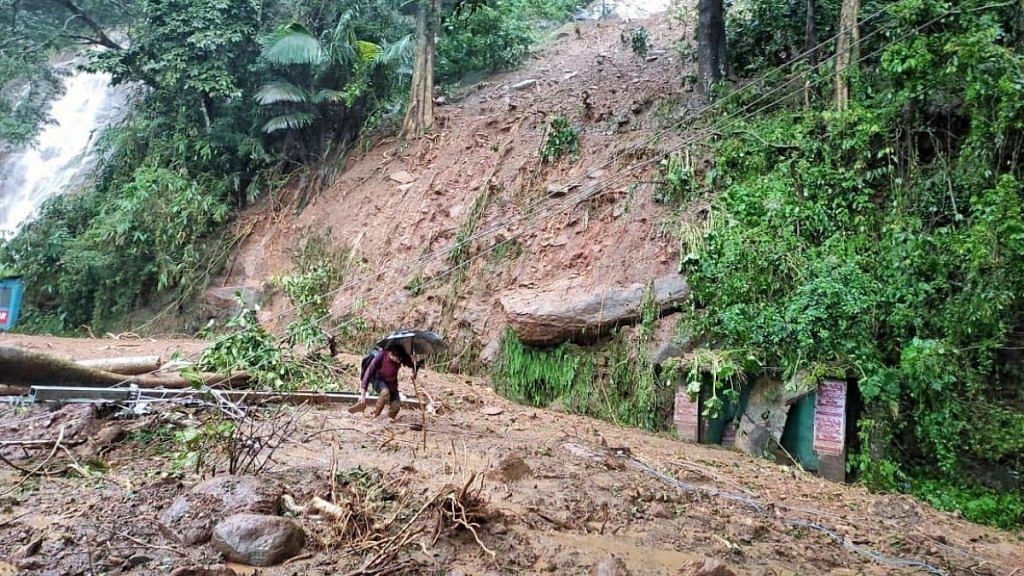New Delhi: Over 74 per cent of India’s districts are vulnerable to extreme climate events, with 27 out of 35 states and union territories being affected, a study by the Council for Energy, Environment and Water (CEEW) has found.
Assam, Andhra Pradesh, Maharashtra, Karnataka and Bihar are the five states most vulnerable to droughts, floods, cyclones, or a combination of the three, says the study titled ‘Mapping India’s Climate Vulnerability — A District Level Assessment.’
The most vulnerable districts are Dhemaji and Nagaon (Assam), Khammam (Telangana), Gajapati (Odisha), Vizianagaram (Andhra Pradesh), Sangli (Maharashtra) and Chennai (Tamil Nadu).
The study measured each district’s vulnerability to climate change by examining exposure (the nature and degree to which a system is exposed), sensitivity (the degree to which a system is affected), and adaptive capacity (the ability of a system to adjust to climate change) using spatio-temporal analysis, that is, data across geographies and time.
Of the districts vulnerable to climate change, more than 45 per cent have undergone unsustainable landscape and infrastructure changes, exacerbating the effects of extreme weather events.
“We find that the pattern of extreme events is changing across regions and that more than 40 per cent of Indian districts exhibit a swapping trend,” says the study, referring to the trend of traditionally flood-prone areas seeing more frequent and intense droughts and vice-versa.
According to the analysis, India has seen over 300 extreme events in recent decades, amounting to a loss of Rs 5.60 lakh crore.
The Intergovernmental Panel on Climate Change report released in August had said India would see more intense and frequent precipitation and heatwaves in the decades to come due to global warming. The Paris Agreement of 2015 sought to limit global warming to “well under” 2 degrees Celsius above pre-industrial levels, to prevent extreme and irreversible climate change. The upcoming COP26, the United Nations Climate Change Conference, is geared towards raising climate ambitions to ensure global warming doesn’t breach the 1.5 degrees Celsius mark.
“Storms are already intensifying into cyclones, droughts are affecting more than half of the country, and floods of unprecedented scale are causing catastrophic loss and damage. These trends are the result of a mere 0.6–0.7 °C rise in temperature in the last 100 years. Thus, there is a pressing need to consider the consequences of a 2°C target,” says the CEEW study.
Also read: This is why Kerala and Uttarakhand are seeing heavy rainfall, flooding in October
Vulnerability across India
The CEEW analysis also examines climate vulnerability across various zones of the country, and finds that western and central India are more vulnerable to drought-like conditions and their compounding effects, while northern and north-eastern zones are more vulnerable to extreme floods and their compounding effects. The southern and eastern zones are becoming extremely prone to cyclones, floods, and droughts combined.
While exposure to extreme weather events is linear, “the impacts are non-linear, depending on the sensitivity and adaptive capacity of the affected systems. For some, it may entail adjustments and re-adjustments in livelihood options, but for others, the impacts can be catastrophic, compounding beyond existing vulnerability thresholds,” says the study.
Among the top 20 districts with maximum exposure to extreme flood events are Darbhanga (Bihar), Madhubani (Bihar), Samastipur (Bihar), Nayagarh (Odisha), Puri (Odisha), Chennai (Tamil Nadu), and Dhemaji (Assam).
Districts most prone to droughts include Rajkot (Gujarat), Anantapur (Andhra Pradesh), Aurangabad (Maharashtra), Barmer (Rajasthan), Churu (Rajasthan), Jaisalmer (Rajasthan) and Jodhpur (Rajasthan).
The districts most prone to cyclones are Nayagarh, Puri, Khordha, Baleswar, Gajapati, and Ganjam, all in Odisha.
Climate Risk Atlas recommended
Only 63 per cent of Indian districts have a disaster management plan, with 32 per cent of these being up-to-date till 2019.
To mitigate the impact of extreme weather events and equip states and districts to deal with climate change, the CEEW study suggests creating a Climate Risk Atlas (CRA), which would “map critical vulnerabilities at the district level and better identify, assess, and project chronic and acute risks such as extreme climate events, heat and water stress, crop loss, vector-borne diseases and biodiversity collapse”.
It also recommends undertaking climate sensitivity-led landscape restoration, which can absorb the shock of extreme weather events, as well as including climate risk profiling when planning infrastructure projects, “to increase adaptive capacity”.
Abinash Mohanty, programme lead at CEEW and lead author of the study, said in a statement: “Climate-proofing of physical and ecosystem infrastructures should also now become a national imperative. India must create a new Climate Risk Commission to coordinate the environmental de-risking mission. Finally, with loss and damage rising exponentially due to the climate crisis, India must demand climate finance for adaptation-based climate actions at COP-26. Enhanced climate finance can also support India-led global agencies like the Coalition for Disaster Resilient Infrastructure (CDRI) to further mainstream climate actions.”
(Edited by Paramita Ghosh)
Also read: These are the ‘code red’ warnings in IPCC climate change report, & why it matters
